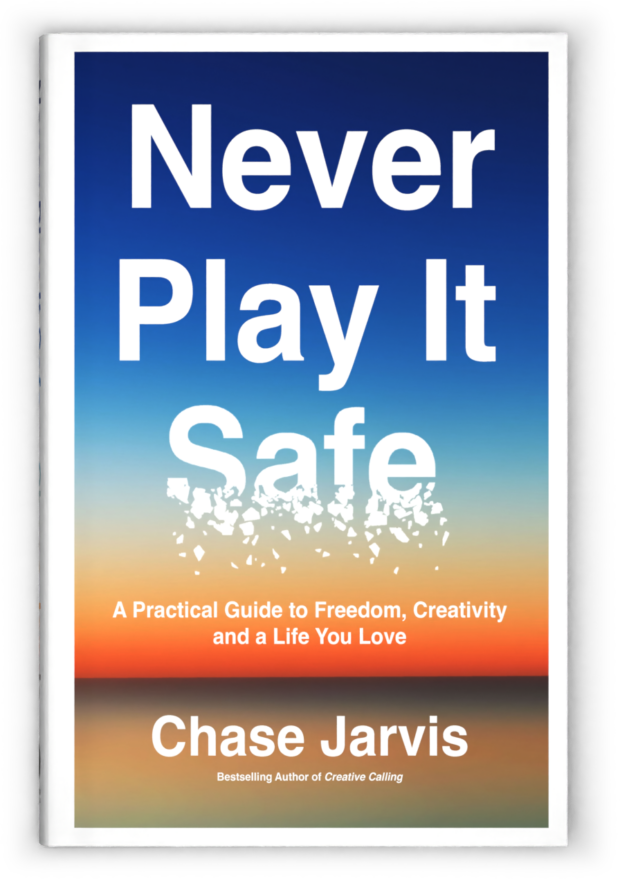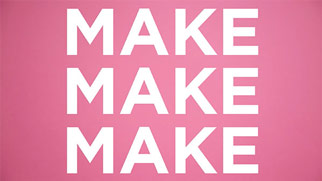
For over a decade, my friend Ramit Sethi has been one of the most influential people in my life when it comes to the business of creativity. If you’re part of our community, you know we reject the “starving artist” narrative. Ramit is the architect of the counter-narrative: living a “Rich Life.” He’s not a typical finance guru who will tell you to stop buying lattes. In fact, he’ll probably tell you to buy more lattes—if that’s what you truly value.
Ramit is a Stanford-educated behavioral psychology expert, the New York Times bestselling author of I Will Teach You to Be Rich, and the host of the Netflix show How to Get Rich. He started his blog from his dorm room in 2004, frustrated with traditional finance advice that focused on deprivation. Instead, Ramit built a philosophy centered on psychology, automation, and designing a life based on what you love, then using money as a tool to make it happen. He gives people the exact scripts and systems to earn more, automate their investments, and spend extravagantly on their passions, guilt-free.
I’ve been fortunate to collaborate with Ramit many times over the years, from our earliest conversations on Chase Jarvis Live to his groundbreaking course on CreativeLive, Money + Business for Creatives. In that course, he specifically helped creatives like us destroy the mental barriers that keep us from charging what we’re worth. Our conversations have always been no-BS explorations of how to stop acting like a “technician” and start getting paid for our unique vision.
Ramit’s philosophy is packed with actionable advice, but a few of his core concepts are game-changers for any creative professional. Here are the big ones you can apply to your own life and career right now.
1. Define Your “Rich Life” (and Spend Extravagantly on It)
The most important question Ramit asks is: What is your “Rich Life”? It’s not about having a million dollars. It’s about specifics. Does it mean traveling to Japan for a month? Does it mean hiring a personal assistant to handle the administrative work you hate? Does it mean buying the best art supplies without checking the price tag? His philosophy is simple: spend extravagantly on the things you love, and cut costs mercilessly on the things you don’t. For me, that means spending on convenience and travel. For you, it might be something different. By defining this, you stop feeling guilty about your spending and start using money as a tool to build the specific life you want.
How to do it:
- Get Specific: Brainstorm what you truly love spending money on (e.g., travel, convenience, high-quality gear, eating out). Be precise. Instead of “freedom,” write “hiring a studio assistant 10 hours a week.”
- Find Your “Money Dials”: Identify these areas of joy and think about what it would feel like to “turn the dial up” on that spending, guilt-free.
- Cut Mercilessly: Find what you don’t care about (e.g., a new car, designer clothes, the latest phone) and find ways to slash spending on those items.
- Create a “Guilt-Free Spending” Goal: Allocate a specific amount of money each month toward your Rich Life.
2. Automate Your Financial System
Creativity requires mental energy and focus. The last thing you want to do is waste that energy worrying about whether you paid your credit card bill or if you saved enough this month. Ramit is a huge proponent of creating an automated financial system. This “set it and forget it” approach uses automatic transfers to pay your bills, fund your savings goals (like for a new camera or a vacation), and contribute to your retirement investments before you even see the money. The goal is to make good financial decisions the default. When your system is automated, you’re free to use your brainpower for what really matters: your creative work.
How to do it:
- Pay Yourself First: Set up an automatic transfer from your checking account to your savings and investment accounts for the day after you get paid.
- Automate Fixed Costs: Set up auto-pay for all your recurring bills (rent, utilities, insurance, software subscriptions).
- Use Separate Accounts: Create distinct savings accounts for your big goals (e.g., “New Lens,” “Japan Trip,” “Emergency Fund”) and automate contributions to each.
- Live Off What’s Left: After your bills are paid and your goals are funded, the money left in your checking account is yours to spend, worry-free.
3. Use the “Briefcase Technique” to Win Clients
This is one of the most powerful, tactical pieces of advice Ramit has ever shared with our audience. When you’re trying to land a new client, don’t just walk in and show your portfolio. Do your homework. Understand their problems, their fears, and their goals. Then, prepare a 1-2 page proposal outlining your 30-60-90-day plan for them. When you’re in the meeting, and they ask about your approach, you say, “I’ve actually put some thought into this,” and you pull out your plan. This (metaphorical) “briefcase” shows you are a problem-solver, not just a pair of hands. As Ramit says, when you do this, price becomes a triviality because you’ve already proven your value.
How to do it:
- Research: Before the meeting, investigate the client’s biggest challenges, recent projects, and stated goals. What problem are they really trying to solve?
- Prepare Your Plan: Create a simple 1-2 page document titled “How [Your Name] Can Help [Client’s Name] Achieve [Their Goal].”
- Outline the First 90 Days: Break down exactly what you would do in the first 30, 60, and 90 days to solve their problem and deliver results.
- Present It: During the meeting, after listening to their needs, present your plan as a set of ideas you’ve already prepared specifically for them.
4. Be a Visionary, Not a Technician
In our conversations, Ramit hammered this point home: creatives get stuck when they allow themselves to be treated as a commodity. A “technician” is someone who can be easily replaced by someone cheaper. A “visionary” is someone who provides a unique point of view that can’t be replicated. A technician gets paid for their time; a visionary gets paid for the value they create. Stop being a technician. Use the “Briefcase Technique,” define who you want to work with, and confidently state the value of your vision. That is how you move from being a “starving artist” to a thriving creative entrepreneur.
How to do it:
- Stop Billing by the Hour: Price your work with project-based packages. This forces you to quote based on the value you deliver, not the time it takes.
- Define Your Ideal Client: Be selective. Who do you do your best work for? Focus all your marketing on attracting them.
- Say “No”: Confidently turn down projects (and clients) that don’t fit your vision or value. This makes room for the right ones.
- Show Your Process: Use your proposals and portfolio to showcase your unique strategic thinking and problem-solving process, not just the final, polished product.
PS – If you’re looking for a guide to help you build the rich life and career you’ve always wanted, the Seven Levers for Life is a free 7-day email course on just that.















